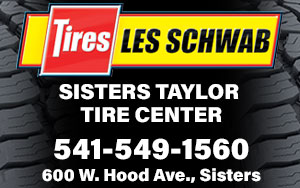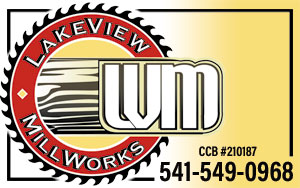Fatten up for winter
Last updated 12/23/2020 at Noon
I put my bike away last week and brought out the snowshoes. It wasn’t snow or temperature that shelved the bike. I simply don’t have the right bike. Hopefully all Sisters bikers are heeding the recent posting of signs by the Sisters Trail Alliance to stay off the trails when muddy. No further explanation required. Bikes and horses, even pedestrians, can do a fair amount of harm to the trail bed.
As I was tromping along a few days ago around Melvin Butte, after an overnight drop of nearly four inches of new snow down to 4,000 feet, I encountered Rick Nordquist and his buddies merrily dashing though the snow on — you guessed it — fat bikes. My goofball sidekick, Robbie, a snow-obsessed Golden was in their way so they had to dismount. It gave us a little time to chat and for me to get the appeal of snow biking.
A “fat” bike and a fat-tire bike are not necessarily the same thing. A true fat bike will come standard with tires at least 3.5 inches wide, up to five inches. Some standard mountain bikes, especially if produced in the last year or two often can accommodate a “fat” tire, one that is 2.8 inches to as much as 3.5 inches. Like all bikes, frame size and wheel size are not the same thing either.
“Fat” bikes have traditionally been on 26-inch wheels, but it’s now possible to get 27.5 inches; even 29 inches. The bigger wheel does give the tire more contact, therefore traction and more roll. Basic physics here. My takeaway after talking with Rick is that you don’t try this at home. Get on down to Blazin Saddles or Eurosports and get properly fitted. Especially if you’re dreaming of riding the snow or beach.
After a proper fitting, the key to it all is tire pressure and clothing. Normally a 26-by-4-inch tire would be inflated to 20-25 psi for pavement, 12-15 for dirt trails, and only 8-10 for snow. Rick and his gang were actually running at 3-4 psi, in pursuit of better traction. The day I saw them, they had already inflated or deflated four times as the terrain changed from packed Forest Service roads to open meadow to running on snow-covered horse trails. They are careful on trails to not get under the snow and into the muddy dirt.
Fat bikes are heavy, starting with a beefier frame and just the sheer weight of the bigger wheel and tire. Five-inch-wide tires will run better in the snow but are more stamina-sapping. It’s like skiing, or in my case snowshoeing today. Uphill builds heat and you start to wonder just how many layers you really needed. Downhill, on a bike, at 15 mph in a 10-mph wind and suddenly you’re wondering where the other fleece is.
Another reason to see a pro are gear options. Rick assures me that the most experienced riders will fall often in the snow. At least it’s a soft landing for the most part. A dropper seat post will facilitate the frequent times you’ll have to dismount. And for sure, do not use clipless pedals. Flat pedals are a safer bet for snow.
As they take off hooting and hollering, I’m thinking: how much is this going to cost me? Both shops in town can get you into a fat bike for around $1,700. You can also spend three times as much but you don’t need to fork out nearly that much to ride pretty much anywhere at any time. Did I mention beach? Won’t that sound sweet come February?


















Reader Comments(0)